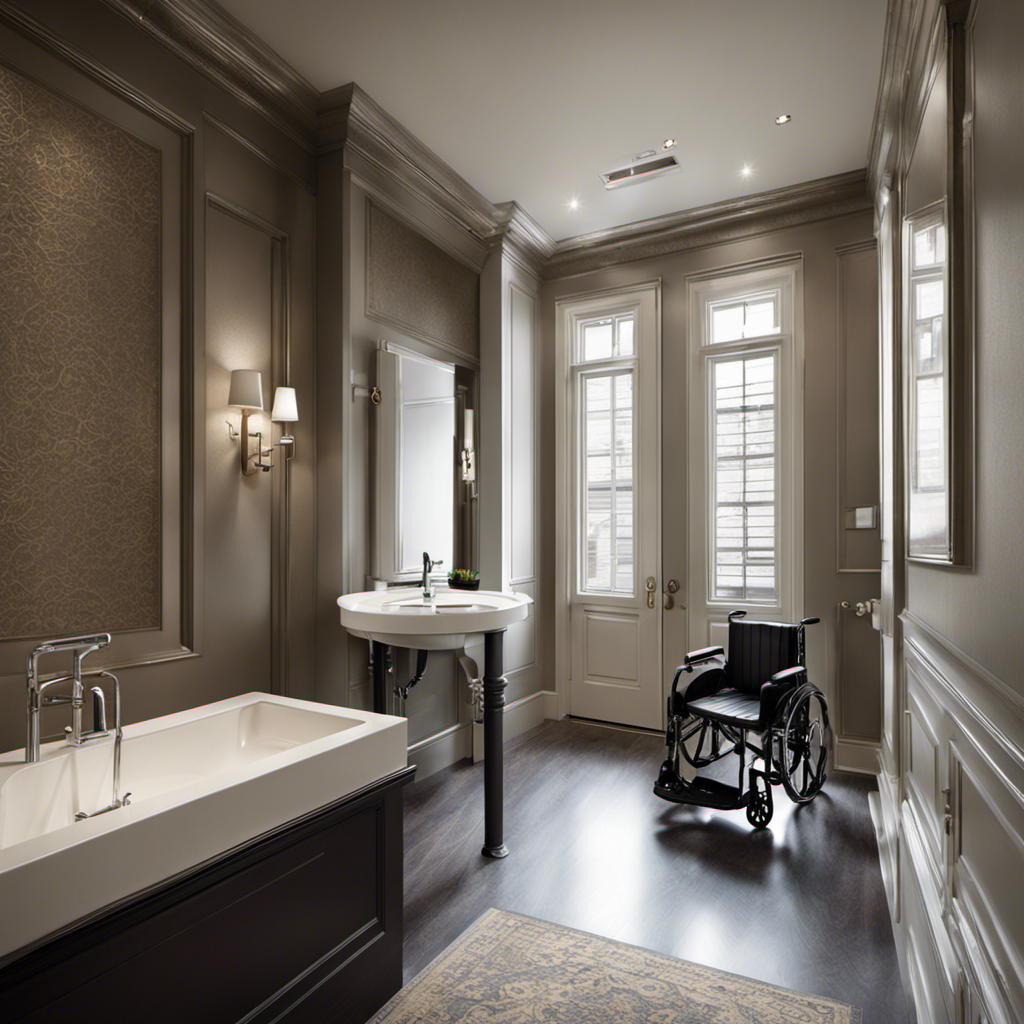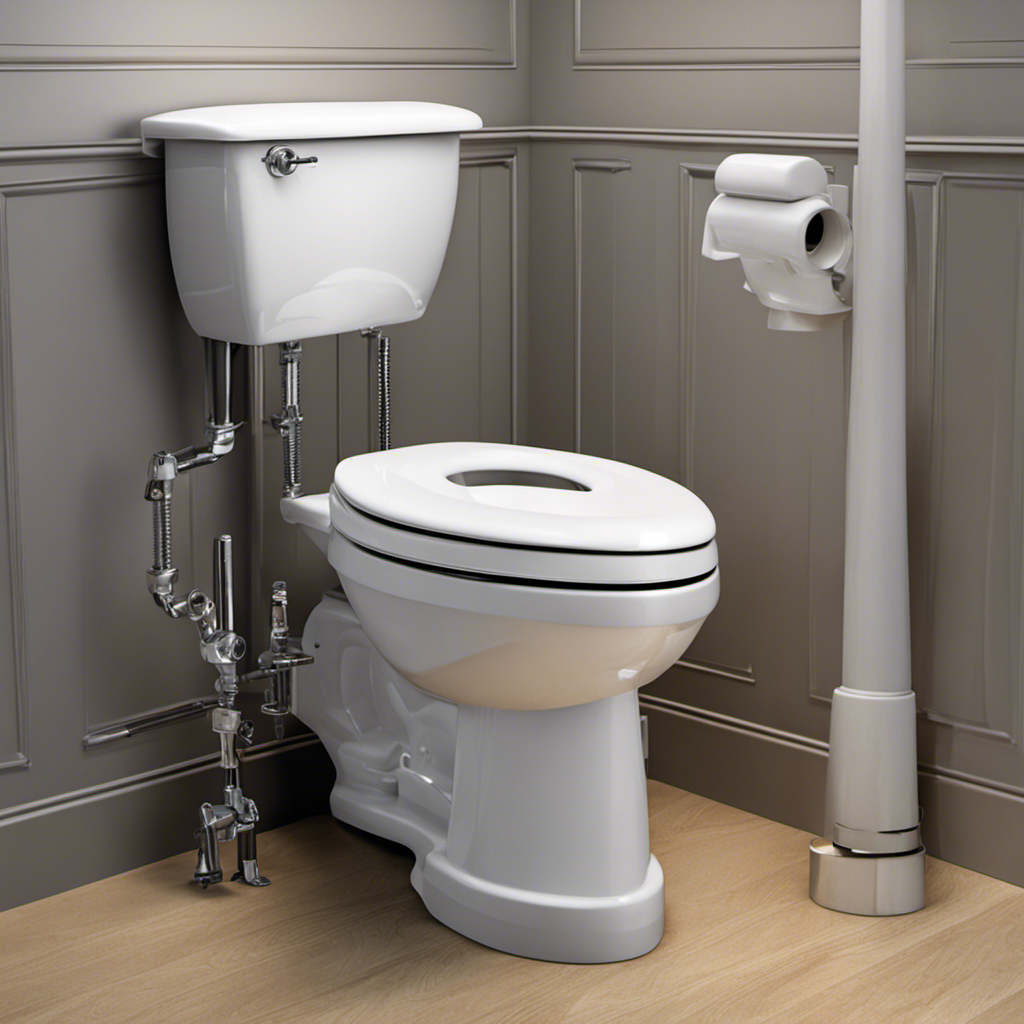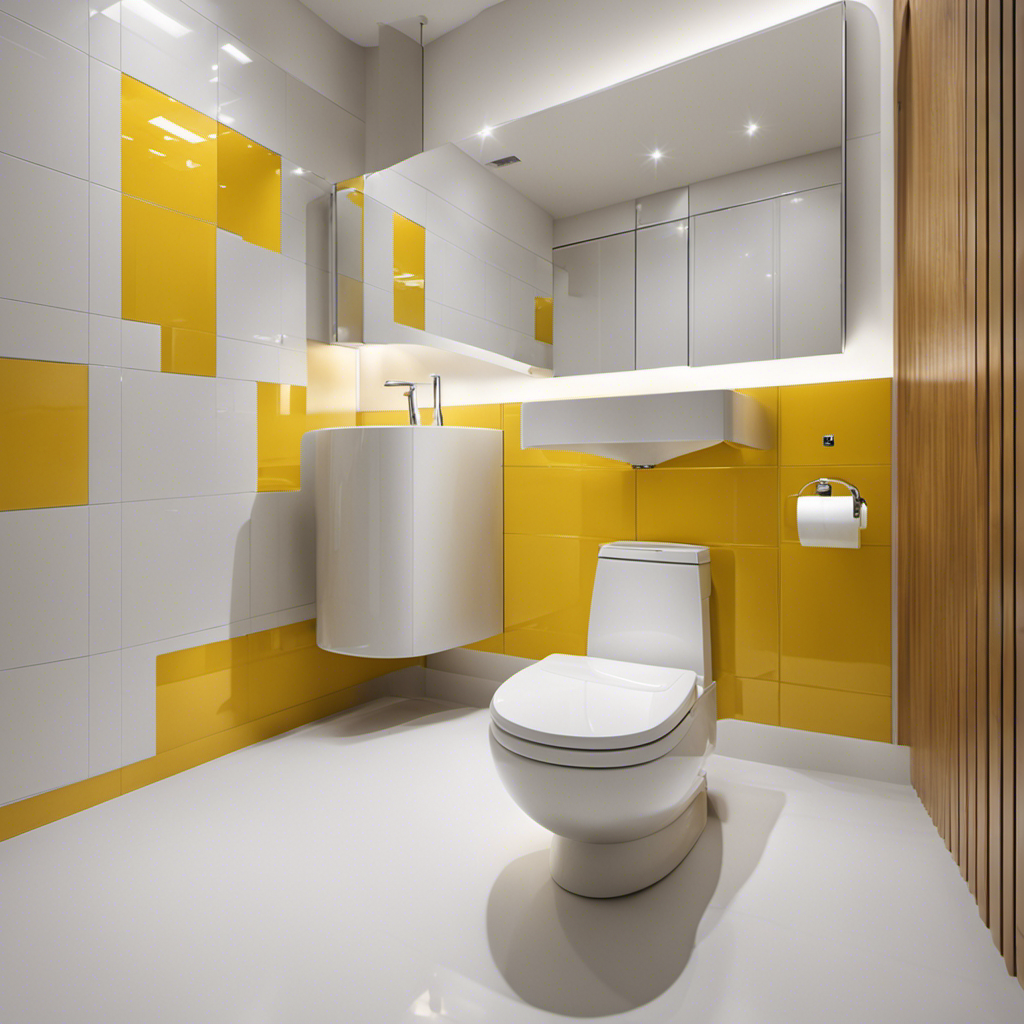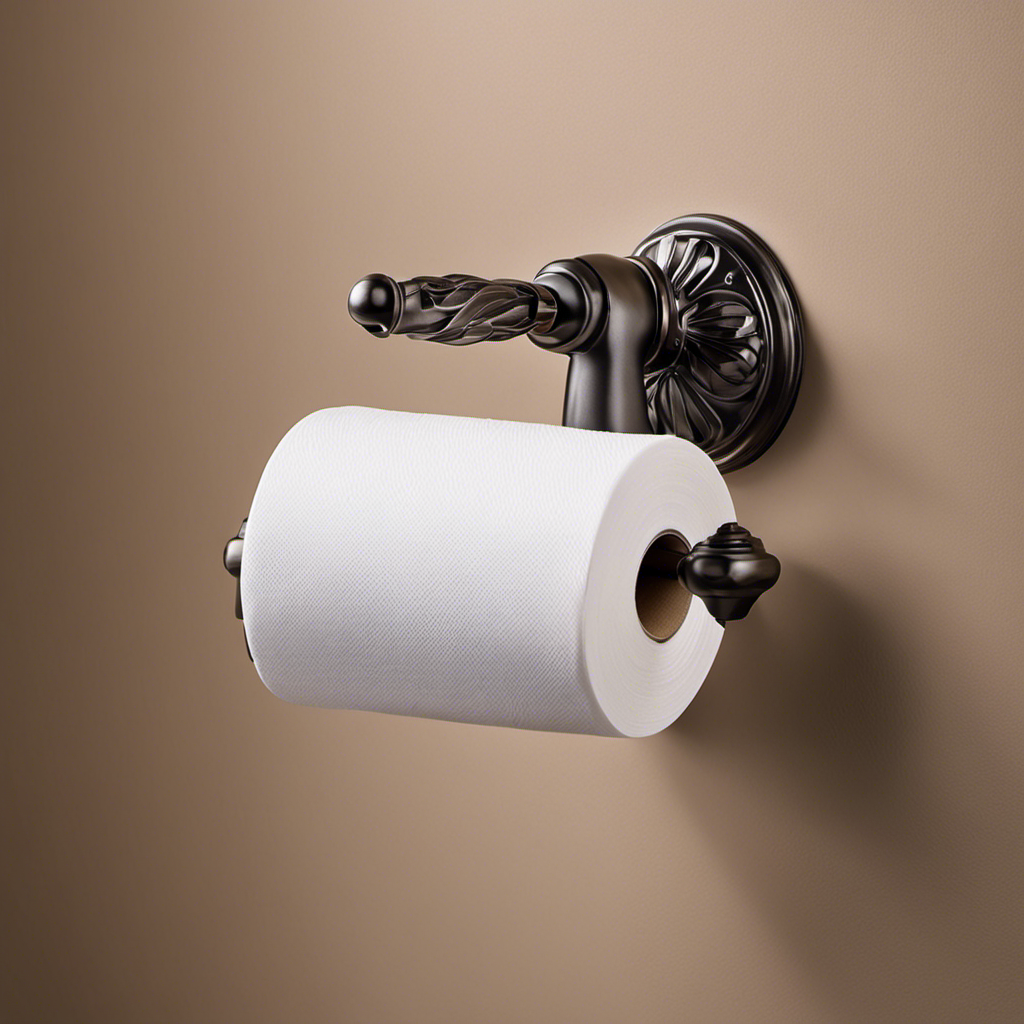Imagine stepping into a restroom and feeling like a giant among toilets, with one towering over you like a skyscraper. Well, fear not! In this article, we will guide you through the ins and outs of handicap toilet heights.
From the ADA standards to recommended heights and common variations, we’ll cover it all. So, get ready to be enlightened and learn how to adjust toilet height for maximum accessibility.
Let’s dive right in!
Key Takeaways
- ADA standards recommend handicap toilets to be between 17 and 19 inches in height.
- Higher toilet height allows for easier transfer between wheelchair and toilet, reducing strain on knees and hips.
- Grab bars provide stability and support for sitting and standing, promoting independence and improving safety.
- Toilet height should be adjusted according to specific needs and level of mobility, using toilet seat risers and installing grab bars for customization and extra support.
ADA Standards for Toilet Height
The ADA standards require that a handicap toilet should be between 17 and 19 inches in height. This height range is specifically designed to accommodate individuals with disabilities, including elderly individuals who may have difficulty sitting down or standing up from a regular toilet seat.
The ADA, or Americans with Disabilities Act, sets guidelines to ensure accessibility and equal opportunities for people with disabilities. The higher toilet height allows for easier transfer between a wheelchair and the toilet, reducing the strain on the user’s knees and hips. It also promotes independence and improves safety for individuals with mobility challenges.
Recommended Height for Handicap Toilets
For optimal accessibility, you should consider installing a handicap toilet at a recommended height. This ensures that individuals with mobility limitations can use the toilet safely and comfortably.
The importance of grab bars in handicap toilets cannot be overstated. These bars provide stability and support, allowing users to sit down and stand up with ease.
Raised toilet seats are another beneficial feature for individuals with mobility limitations. Here are some reasons why:
- Improved safety: The raised height reduces the strain on the knees and hips, making it easier for individuals to sit and stand.
- Increased independence: With a raised toilet seat, individuals can maintain their privacy and independence by using the toilet without assistance.
- Enhanced comfort: The raised seat provides a more comfortable position for individuals with mobility issues, reducing the risk of discomfort or pain.
- Easy installation: Raised toilet seats can be easily installed on most standard toilets, making them a convenient and cost-effective solution.
- Versatile design: Many raised toilet seats come with adjustable height options, allowing users to customize the seat to their specific needs.
Common Height Variations for Handicap Toilets
Consider different height variations when installing a handicap toilet to ensure optimal accessibility.
Handicap toilets come in various heights to accommodate individuals with different needs. The standard height for a handicap toilet is 17-19 inches, which is higher than a regular toilet. This height allows for easier transfer from a wheelchair to the toilet seat.
However, there are also lower height options available, ranging from 15-17 inches, for those who may have difficulty with higher seats. It is important to note that regardless of the height chosen, grab bars should always be installed near the toilet to provide stability and support. These bars are crucial for individuals with mobility limitations.
By considering the different height variations and incorporating grab bars, you can create a truly accessible and safe environment for those in need.
Moving forward, let’s explore the factors to consider when determining toilet height.
Factors to Consider When Determining Toilet Height
When determining the height of your toilet, you should take into account factors such as your individual needs and level of mobility. The height of a toilet can have a significant impact on your comfort and independence. Here are some considerations to keep in mind:
-
Ergonomic considerations for toilet height: The height of the toilet should be aligned with your body’s natural posture to prevent strain on your joints and muscles.
-
Impact of toilet height on user comfort: A toilet that is too low can make it difficult to sit down and stand up, causing discomfort and potential falls. On the other hand, a toilet that is too high can also be uncomfortable and may require excessive effort to use.
-
Impact of toilet height on user independence: The right toilet height can promote independence by allowing you to use the toilet without assistance, improving your overall quality of life.
Adjusting Toilet Height for Accessibility
To ensure accessibility, you should adjust the height of your toilet according to your specific needs and level of mobility. One way to achieve this is by using toilet seat risers. These are specially designed devices that can be easily installed on top of your existing toilet seat, adding height and making it more comfortable for you to use.
Toilet seat risers come in different heights, so you can choose the one that suits you best. Additionally, installing grab bars near the toilet can provide extra support and stability, especially for individuals with limited mobility. These bars can be mounted on the wall next to the toilet, allowing you to easily hold onto them when sitting down or standing up.
Conclusion
So there you have it, folks! Now you know all about the height of handicap toilets.
The ADA standards dictate that they should be between 17 and 19 inches in height, while the recommended height is 18 inches.
However, it’s important to note that there can be variations in height depending on the specific needs of the individual and the installation requirements.
When determining the height of a handicap toilet, factors such as the user’s height, mobility, and any additional assistive devices should be taken into consideration.
So make sure to adjust the toilet height accordingly for maximum accessibility. And remember, when it comes to providing equal access and comfort, there’s no such thing as too high or too low, just right!










